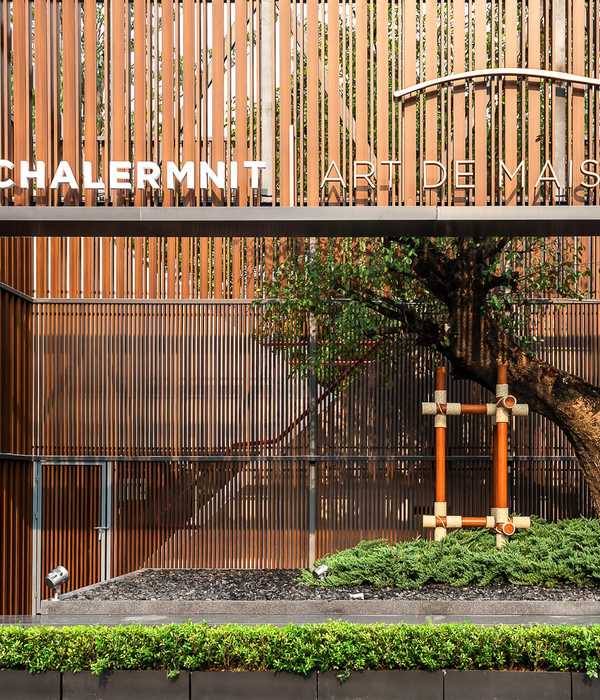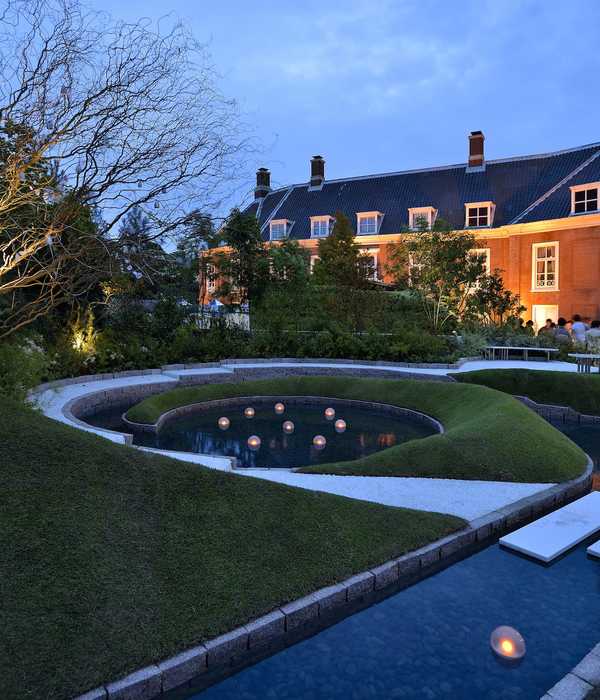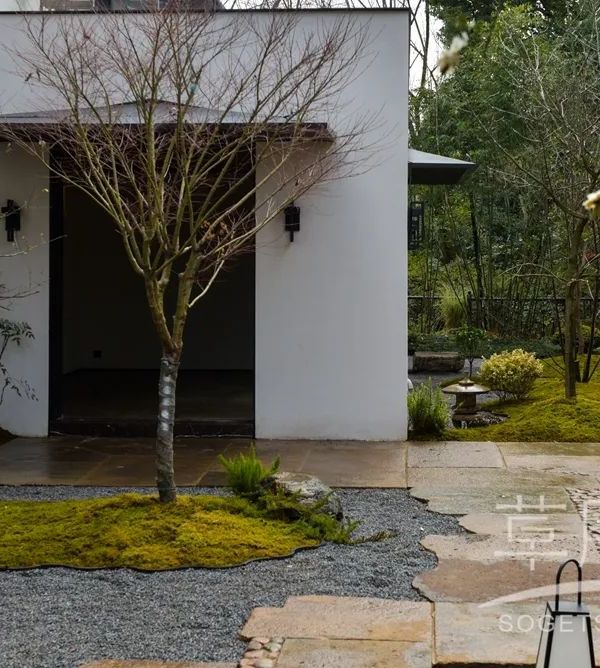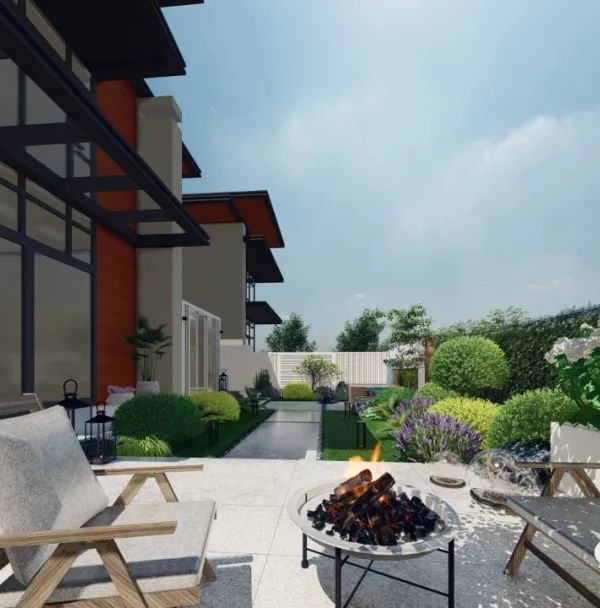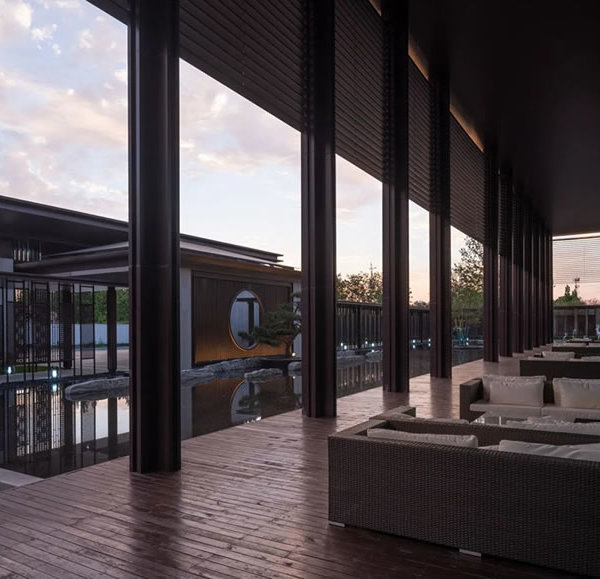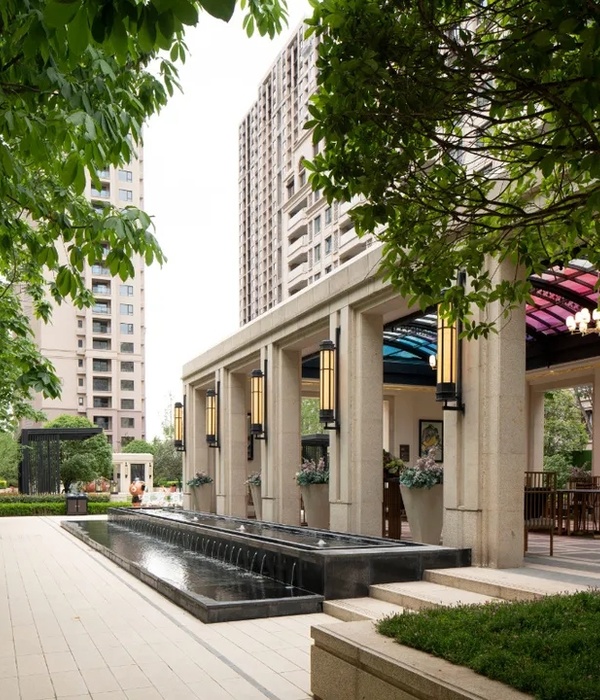该项目坐落于墨西哥城中心一座20世纪早期宫殿的屋顶上,是一处举办文化活动与节日庆典的活动场所。为了避免降雨对屋顶活动的影响,项目的业主委托建筑师为现有的三处天井庭院增设覆盖结构。
The project is located on the rooftop of an early twentieth century palace where cultural and festive events are held, in the center of Mexico City. In order to prevent the occasional rains to interrupt the activities organized in the courtyards, the owner of the property required to cover the three existing patios.
▼视频,video ©PRODUCTORA
与其将三座天井庭院作为三个独立的空间来设计,建筑师选择采用一个长度超过50米的连续屋顶结构,将三处天井连成一条直线。这种设置不仅能够为天井遮阳挡雨,同时也在天井之间创造出新的凉亭空间。
Instead of making three independent interventions, we generated one single proposal: a continuous roof structure, measuring more than 50 meters in length, connecting the patios in a straight line and generating new covered surfaces in between the patios.
▼项目与周边环境鸟瞰,aerial view of the project and surrounding environment ©Onnis Luque
▼历史建筑屋顶上的活动空间,An event space on the roof of a historic building ©Onnis Luque
▼轻质工业结构与历史建筑形成对比,The lightweight industrial structure contrasts with the historic building ©Onnis Luque
屋顶增设结构由45个轻质金属桁架做成,桁架之间均相距1.2 m,结构沿着屋顶排布,将自身重量均匀地分配在现有建筑结构上,营造出富有韵律感的透视效果。三角形的顶部桁架并没有采用对称的设计,旨在为结构的一侧留出带有屋檐的走廊空间。
The structure consists of 45 lightweight metal trusses, each 1.2 m apart, dividing the weight evenly over the existing construction and accentuating rhythm and perspective along the roof. The triangular roof section is designed asymmetrically so that one side could incorporate a covered circulation.
▼连续屋顶结构长度超过50米,continuous pergola structure over 50 m in length ©Onnis Luque
▼不对称三角形的顶部桁架结构,Asymmetrical triangular top truss structure ©Onnis Luque
▼不对称的屋顶形式在凉棚一侧形成带有屋檐的走廊空间,The asymmetric roof form creates a protected corridor on one side of the structure ©Onnis Luque
项目采用了大量轻质工业化合成材料,如:PVC地板、聚碳酸酯板,以及由尼龙网制成的栏杆,这种选材的目的是减轻结构重量,并使其与历史建筑的材料产生强烈的对比。半透明与透明两种类型聚碳酸酯的结合,过滤了刺眼的自然光线,在保证人们能够从庭院中看到天空的同时,营造出丰富的光影效果。
Light and industrialized synthetic materials such as the PVC deck, polycarbonate sheets or the railings made of nylon nets, seek to reduce the weight of the construction and generate a strong contrast with the materiality of the historic building. Two different types of polycarbonate were used (translucent and transparent), to filter the sunlight, while allowing to see the sky from the courtyards.
▼项目采用了大量轻质工业化合成材料, Light and industrialized synthetic materials of the structure ©Onnis Luque
▼檐下走廊,protected circulation space ©Onnis Luque
▼金属框架与聚碳酸酯板的结合, Metal frame combined with polycarbonate board ©Onnis Luque
此外,受到农业与工业建筑的启发,建筑师还在特定的地方设置了集成式织物屏风,以进一步减少太阳辐射。装饰或设备元素的设计与结构的几何节奏相辅相成,比如遍布于天井空间中、并勾勒出新露台轮廓的景观花池,或者强调出城市天际线的灯具等。
Additionally, textile screens (borrowed from the agricultural industry) are integrated in specific places to mitigate the solar incidence. The geometric rhythm of the structure is complemented by another series of elements such as the planters that overflow the patios and delimit the new terraces, or the light fixtures that highlight the intervention in the city’s skyline.
▼不同透明度的聚碳酸酯板过滤了刺眼的光线,Polycarbonate panels of varying transparency filter out harsh light ©Onnis Luque
▼增设的结构起到了为天井空间遮阳挡雨的功能,The structure plays a role in shading the patio space from the sun and rain ©Onnis Luque
▼结构细部,detail of the structure ©Onnis Luque
▼天井,patio ©Onnis Luque
▼由天井看屋顶,viewing the rooftop from the patio ©Onnis Luque
作为拆除墨西哥城内未注册历史建筑的替代方案,本项目向公众展示出一种在没有(或尚未获得)充足修复资金情况下的巧妙改造方案,通过设计重新利用空间,发挥出建筑的潜在价值。可以说本项目探索“发现”了建筑的美学品质,并通过当代的干预策略则强了新旧对比,进一步彰显出建筑的美。
As an alternative to demolishing historic – but often not registered – buildings in Mexico City, this project shows how valuable structures can be re-used and adapted in an intelligent way, when the financing for a full-scale restauration is not (or not yet available). It explores the esthetic quality of the building “as found ”– and enhances that experience by contrasting it with a contemporary intervention.
▼黄昏中的建筑,project in the dusk ©Onnis Luque
▼灯光效果,light effect ©Onnis Luque
▼夜景鸟瞰,aerial night view ©Onnis Luque
▼夜景,night view ©Onnis Luque
▼区位图,site plan ©PRODUCTORA
▼屋顶平面图,roof plan ©PRODUCTORA
▼平面图,plan ©PRODUCTORA
▼剖面图,sections ©PRODUCTORA
Credits:
Architecture: PRODUCTORA (Carlos Bedoya, Wonne Ickx, Abel Perles, Víctor Jaime)
Collaborators: Ruy Berumen, Diego Velázquez
Location: Downtown (Colonia Juárez), Mexico City
Structural Engineering: Kaltia
Landscape: PlantaDB
Client: Proyecto Público Prim
Surface: 870m²
Photography: Onnis Luque
{{item.text_origin}}

